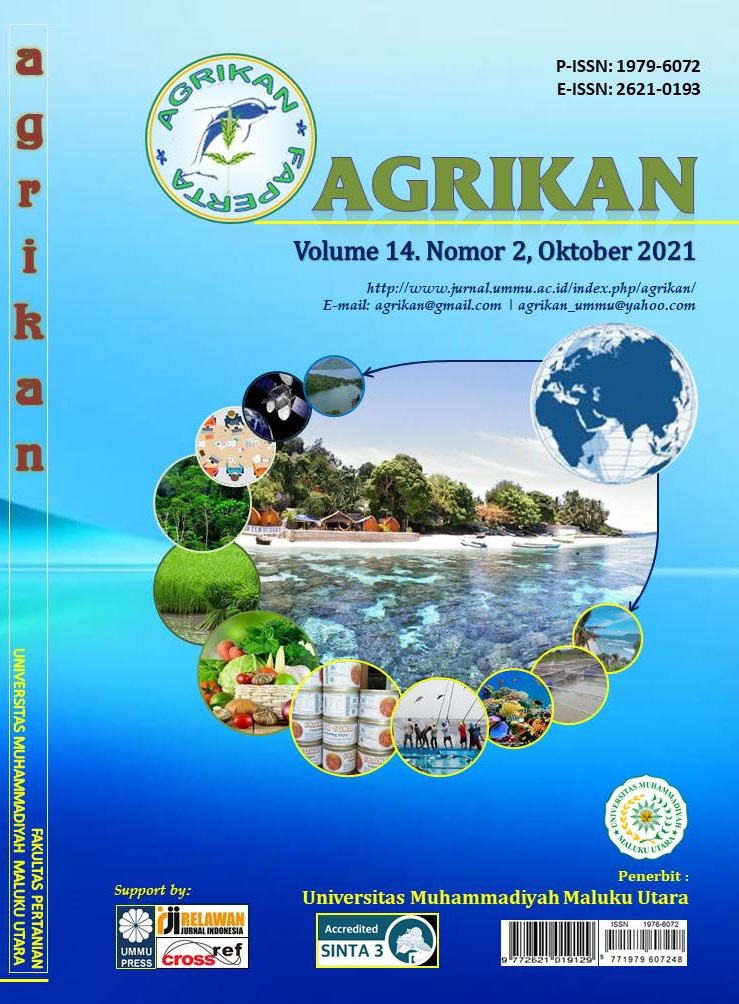An Analysis of Gold Ore Mining Impact on Water Pollution in Poboya, Central Sulawesi
DOI:
https://doi.org/10.52046/agrikan.v14i2.881Keywords:
Gold, community mining, waste, river, maximum levels of MercuryAbstract
The aim of this study is to find out how much heavy metal mercury is in wastewater from gold processing in mining activities.Field observation methods for direct observation and sampling have been used at mining and processing sites. In the laboratory, the Hg content of liquid waste from mining was tested. The field survey is divided into three stages: pre-survey, main survey, and laboratory analysis. Water samples were collected at five predetermined points based on the condition of the waste and the potential for contamination. The results revealed that two of the five samples taken had extremely high mercury content, namely 5.0828 pp Hg at location 02 and 6.3060 pp Hg at location 03. Furthermore, three samples with low Hg content were found between other locations: 01 contains 0.5499 ppm, 03 (B) contains 0.0182 ppm, and 04 contains 0.0015 ppm. This is based on Ministerial Decree No. 202 of 2004 concerning the quality standards of wastewater for businesses and mining activities involving gold or copper ore, with a maximum level limit for mercury (Hg) of 0.005 mg/l ppm and regulatory water quality standards. According to Government Order No. 82 of 2001, the maximum level of Hg is 0.0001 mg/l ppm.
Downloads
Published
Issue
Section
License
Copyright (c) 2021 Gina Audina P. Alhabsyi, Nilam Sry Putri, Kifayatul Khair Masyhuda Zulkifli, Suherwin Suherwin

This work is licensed under a Creative Commons Attribution 4.0 International License.

This work is licensed under a Creative Commons Attribution 4.0 International License.













